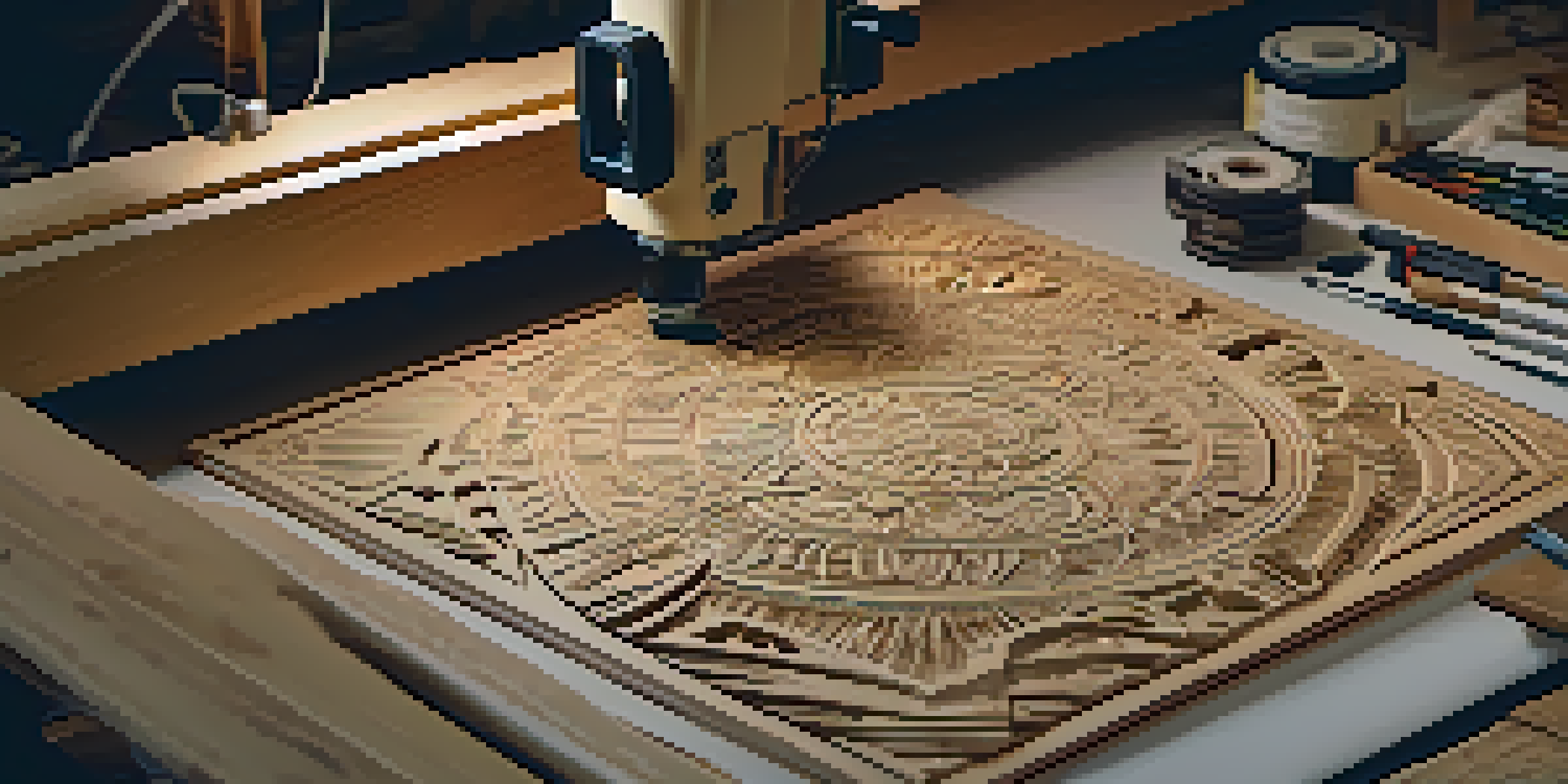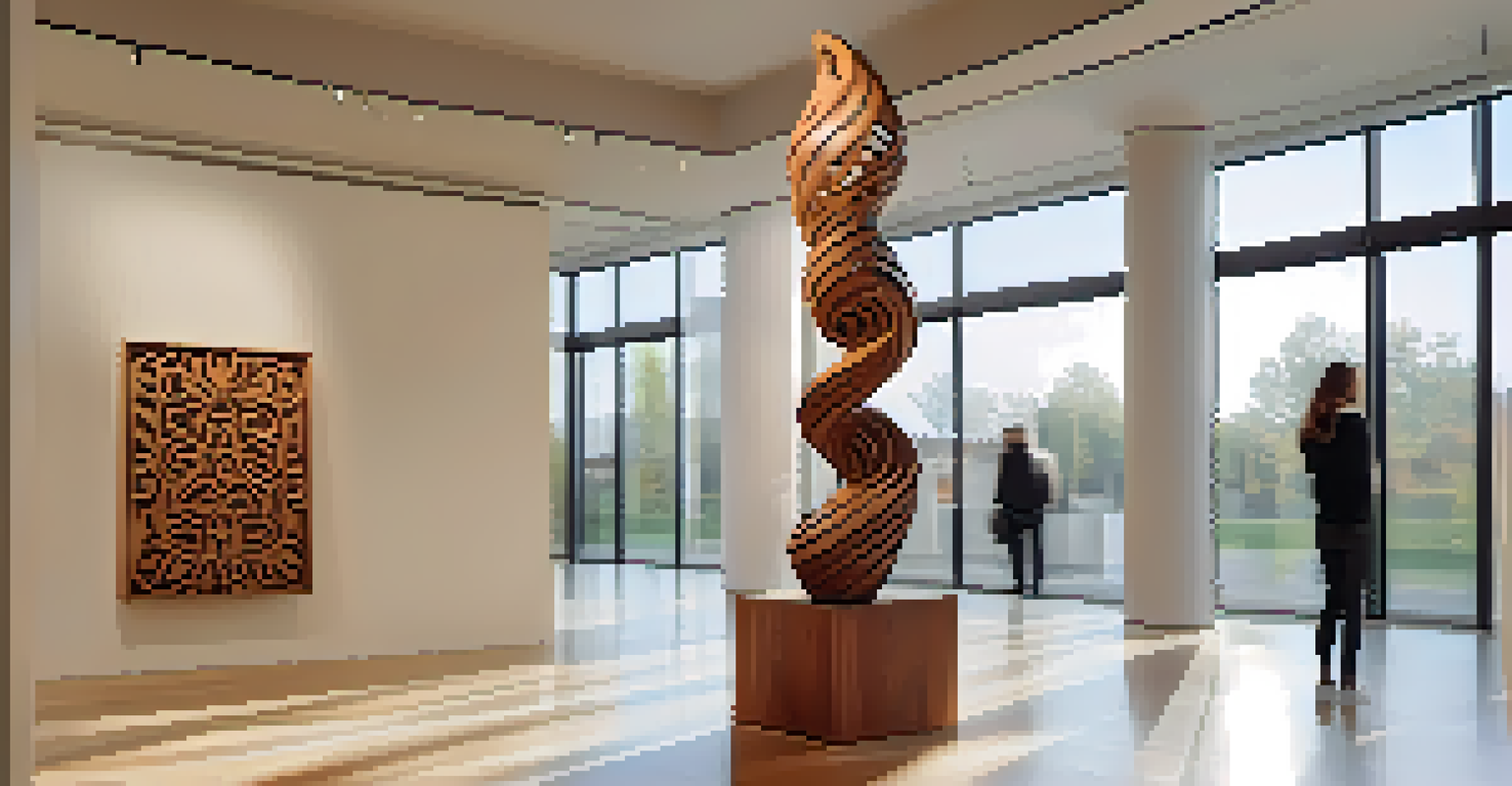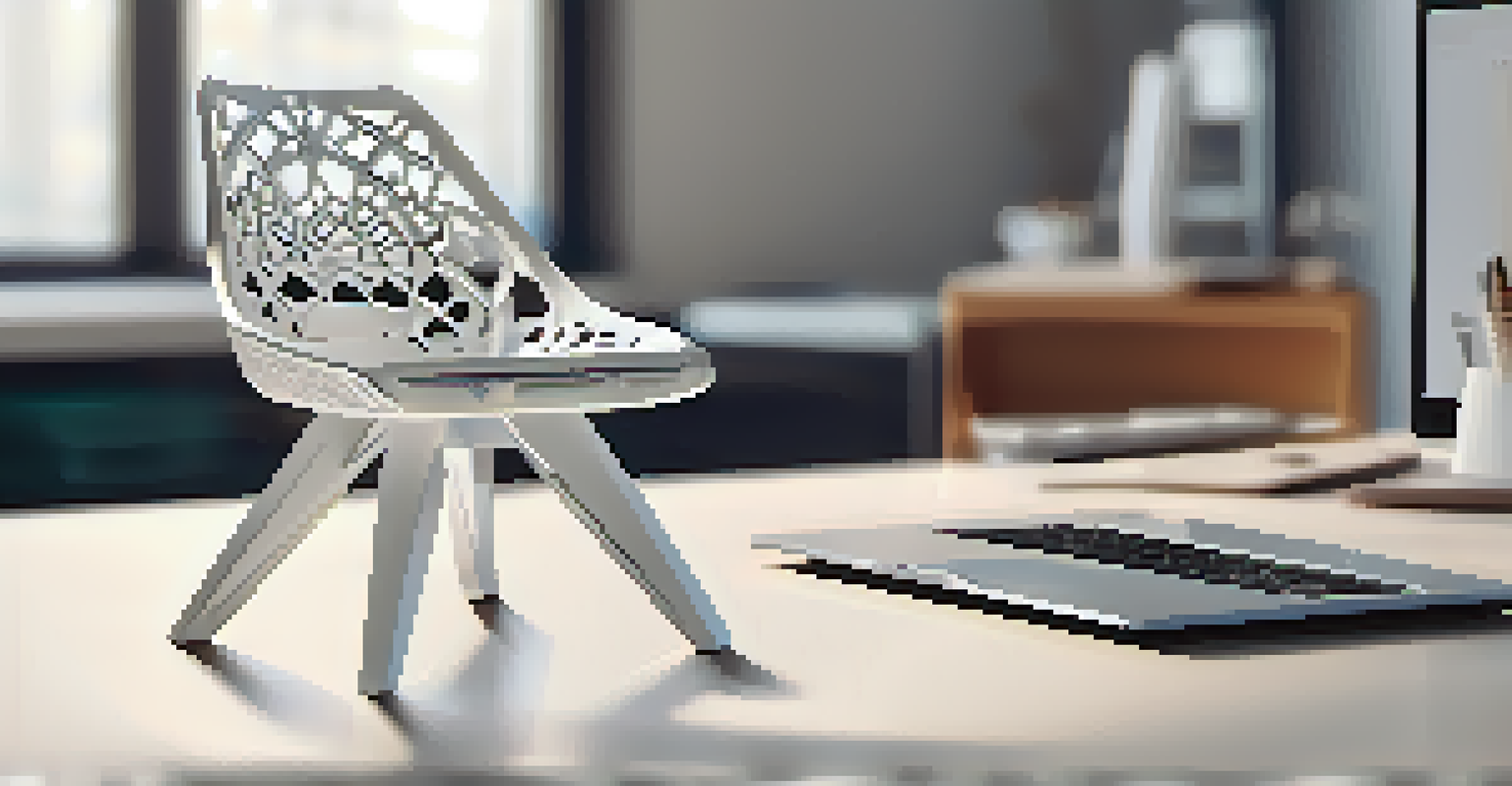Digital Carving: Bridging Traditional Techniques with Design

Understanding Digital Carving and Its Origins
Digital carving is an innovative technique that combines traditional sculpting methods with modern technology. It allows artists to create intricate designs using computer software and machines, rather than just hand tools. This evolution in craftsmanship traces its roots back to ancient carving practices, showcasing how art has transformed over time.
Art is the most beautiful of all lies; it is a form of truth that transcends reality.
By employing tools like CNC (Computer Numerical Control) machines, artists can achieve precision and detail that were once impossible with manual techniques. This intersection of the digital and the physical not only enhances the creative process but also opens up new possibilities for artists everywhere. Imagine a sculptor using a virtual sketch to guide a machine that brings their vision to life with astonishing accuracy.
As we delve deeper into the world of digital carving, it's essential to appreciate the craftsmanship that still exists alongside these advancements. Artists today are blending age-old skills with cutting-edge technology, showing that while tools may change, the passion for art remains timeless.
The Tools of the Trade in Digital Carving
To embark on a journey into digital carving, one must first familiarize themselves with the array of tools available. Software like Adobe Illustrator and CAD programs serve as the backbone for designing intricate patterns and shapes. Once designs are created, they can be sent to CNC machines capable of cutting, milling, or engraving materials with precision.

These machines use various materials, including wood, stone, and even metals, allowing artists to explore different textures and finishes. Each material presents unique challenges and opportunities, which can inspire creativity. For example, carving into soft wood allows for more delicate designs, while harder materials like granite require advanced techniques to achieve the desired results.
Digital Carving Blends Old and New
Digital carving combines traditional sculpting techniques with modern technology, allowing artists to create intricate designs with remarkable precision.
Moreover, the advent of 3D printing technologies has further expanded the realm of possibilities in digital carving. Artists can now create complex forms that were once thought to be too intricate for traditional methods, pushing boundaries and redefining the art form.
Blending Traditional Techniques with Digital Methods
One of the most fascinating aspects of digital carving is how it honors traditional techniques while integrating modern technology. Many artists incorporate hand-carving skills into their digital designs, ensuring that the human touch remains evident in the final piece. This fusion creates a dialogue between past and present, allowing for innovation grounded in history.
The great artist is the simplifier.
For instance, an artist might start with a hand-carved wood piece, scanning it to create a digital replica. From there, they can modify the design digitally before using a CNC machine for precision cutting. This process not only enhances the final outcome but also preserves the artist's original vision and craftsmanship.
Ultimately, this blending of techniques enriches the art form, making it more accessible to a broader audience. It invites both traditionalists and tech enthusiasts to appreciate the beauty of carving, regardless of their preferred medium.
The Role of Digital Carving in Modern Design
Digital carving has significantly impacted modern design, especially in fields like architecture and product design. Designers can quickly prototype ideas using digital carving, streamlining the creative process and allowing for rapid iterations. This flexibility enables teams to explore a variety of concepts before settling on a final design, reducing both time and costs.
Moreover, the ability to create highly detailed models encourages innovation in aesthetics and functionality. For example, furniture designers can create unique patterns and textures that stand out in a crowded market. This capability not only enhances the visual appeal but also adds a tactile element that can make products more engaging.
Challenges in Digital Carving
Despite its advantages, digital carving presents challenges like a steep learning curve and significant financial investment in tools and software.
As businesses increasingly prioritize sustainability, digital carving can also contribute to eco-friendly practices. By using advanced software to optimize materials and minimize waste, designers can create beautiful pieces while being mindful of their environmental impact.
Challenges and Limitations of Digital Carving
While digital carving offers numerous advantages, it is not without its challenges. One of the primary hurdles is the steep learning curve associated with mastering the required software and machinery. Aspiring artists might find it daunting to transition from traditional methods to digital techniques, requiring time and dedication to develop their skills.
Additionally, there can be a significant financial investment in the necessary equipment and software. For many artists, especially those starting out, this can pose a barrier to entry. It's essential for them to weigh the costs against the benefits, considering whether digital carving aligns with their artistic vision and goals.
Despite these challenges, many artists find that the rewards of digital carving outweigh the obstacles. With perseverance, they can unlock new creative potential and reach audiences in ways they never thought possible.
The Future of Digital Carving in Art and Design
As technology continues to evolve, the future of digital carving looks promising. Innovations in artificial intelligence and machine learning are beginning to influence design processes, enabling artists to create even more complex and unique works. This evolution could redefine what we consider art and how we engage with it.
Moreover, as digital carving becomes more mainstream, we can expect to see a wider acceptance of this art form in galleries and exhibitions. Artists will have the opportunity to showcase their work in new ways, blending physical and digital experiences that captivate audiences and spark conversations.
Future of Digital Carving is Bright
As technology advances, digital carving is poised for growth, integrating innovations like AI while fostering collaboration between artisans and tech-savvy creators.
Ultimately, the future of digital carving will likely be characterized by collaboration between traditional artisans and tech-savvy creators. This partnership could lead to groundbreaking techniques and artistic expressions that honor the past while embracing the infinite possibilities of the digital age.
Inspiring Examples of Digital Carving in Action
To truly appreciate the potential of digital carving, one must look at the inspiring examples emerging from this field. Artists like John McNaughton and his intricate wood carvings showcase how digital techniques can elevate traditional craftsmanship. His ability to blend the two worlds offers a glimpse into what is possible when creativity knows no bounds.
Another notable example is the work of designers in the architectural field, such as Zaha Hadid Architects. Their use of parametric design software allows them to create stunning, fluid forms that challenge conventional architectural norms. This innovative approach is a perfect representation of how digital carving can transform entire industries.

These examples not only inspire aspiring artists but also demonstrate the vast potential of digital carving. They remind us that by embracing technology, we can push the boundaries of creativity and create works that resonate with audiences in profound ways.